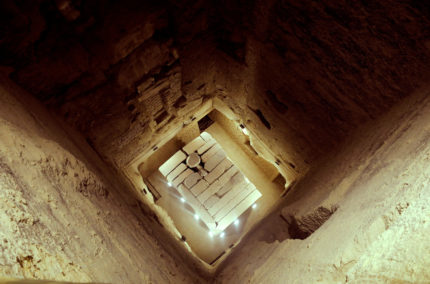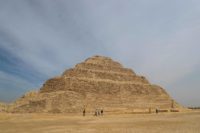 Egypt’s oldest pyramid, indeed, the first monumental cut stone structure ever built, has reopened to the public after years of disaster (natural and man-made) and restoration. The step pyramid of Djoser, tomb of the first pharaoh of the Old Kingdom, was built around 2,680 B.C. in Saqqara, the ancient capital of Memphis. High priest of Ra and the pharaoh’s vizier Imhotep is believed to have engineered this marvel by building a large square mastaba and then pile five more on top of it in descending size.
Egypt’s oldest pyramid, indeed, the first monumental cut stone structure ever built, has reopened to the public after years of disaster (natural and man-made) and restoration. The step pyramid of Djoser, tomb of the first pharaoh of the Old Kingdom, was built around 2,680 B.C. in Saqqara, the ancient capital of Memphis. High priest of Ra and the pharaoh’s vizier Imhotep is believed to have engineered this marvel by building a large square mastaba and then pile five more on top of it in descending size.
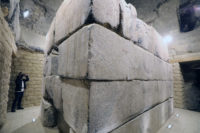 Underneath the pyramid is a network of tunnels, shafts and passages that create a palace for the king to enjoy in the afterlife. The burial chamber contains a massive pink granite sarcophagus. No human remains have been found in the chamber as the pyramid was hard to miss and tomb raiders pillaged it thoroughly.
Underneath the pyramid is a network of tunnels, shafts and passages that create a palace for the king to enjoy in the afterlife. The burial chamber contains a massive pink granite sarcophagus. No human remains have been found in the chamber as the pyramid was hard to miss and tomb raiders pillaged it thoroughly.
In 1992, the pyramid was badly damaged in an earthquake. It was so unstable that basic steps like building scaffolding ran the risk of causing even more damage to the interior. Restoration began in 2006, and in 2011, a creative approach using large airbags to prop up the precarious ceilings and walls looked to be very promising. Then came the overthrow of Mubarak and restorations were stopped for two years.
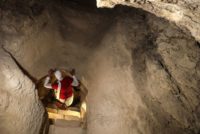 When they picked back up in 2015, there were rumblings that some poor choices were being made and that the façade of the pyramid had been changed from its original. UNESCO experts advised restorers on how to restore the World Heritage site without making alterations that changed its iconic exterior.
When they picked back up in 2015, there were rumblings that some poor choices were being made and that the façade of the pyramid had been changed from its original. UNESCO experts advised restorers on how to restore the World Heritage site without making alterations that changed its iconic exterior.
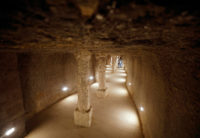 The restoration is now complete. The outside of the pyramid, its internal corridors, the burial chamber, the south and east entrances are now safe for visitors. There is new lighting in the tunnels and the stunning limestone floors, walls decorated with faience and carved reliefs can be seen and photographed.
The restoration is now complete. The outside of the pyramid, its internal corridors, the burial chamber, the south and east entrances are now safe for visitors. There is new lighting in the tunnels and the stunning limestone floors, walls decorated with faience and carved reliefs can be seen and photographed.
